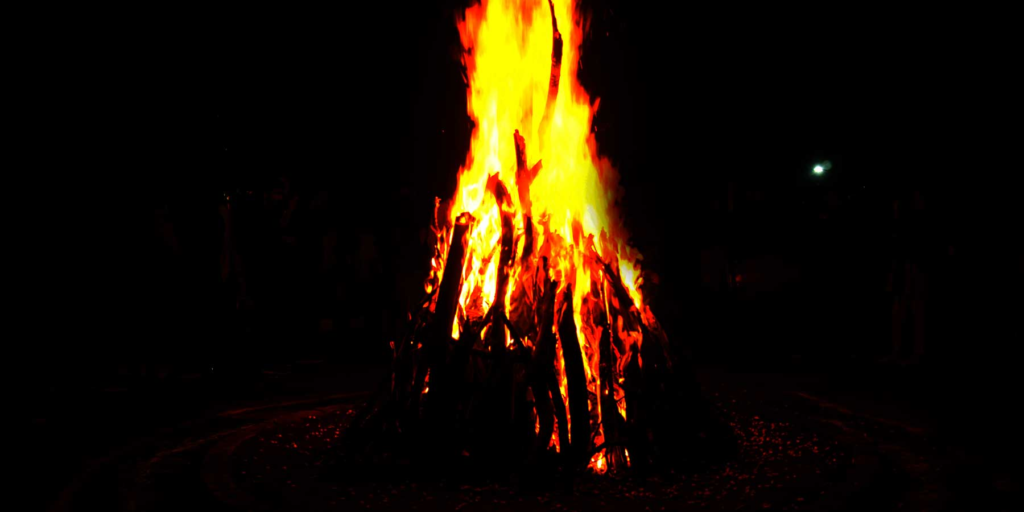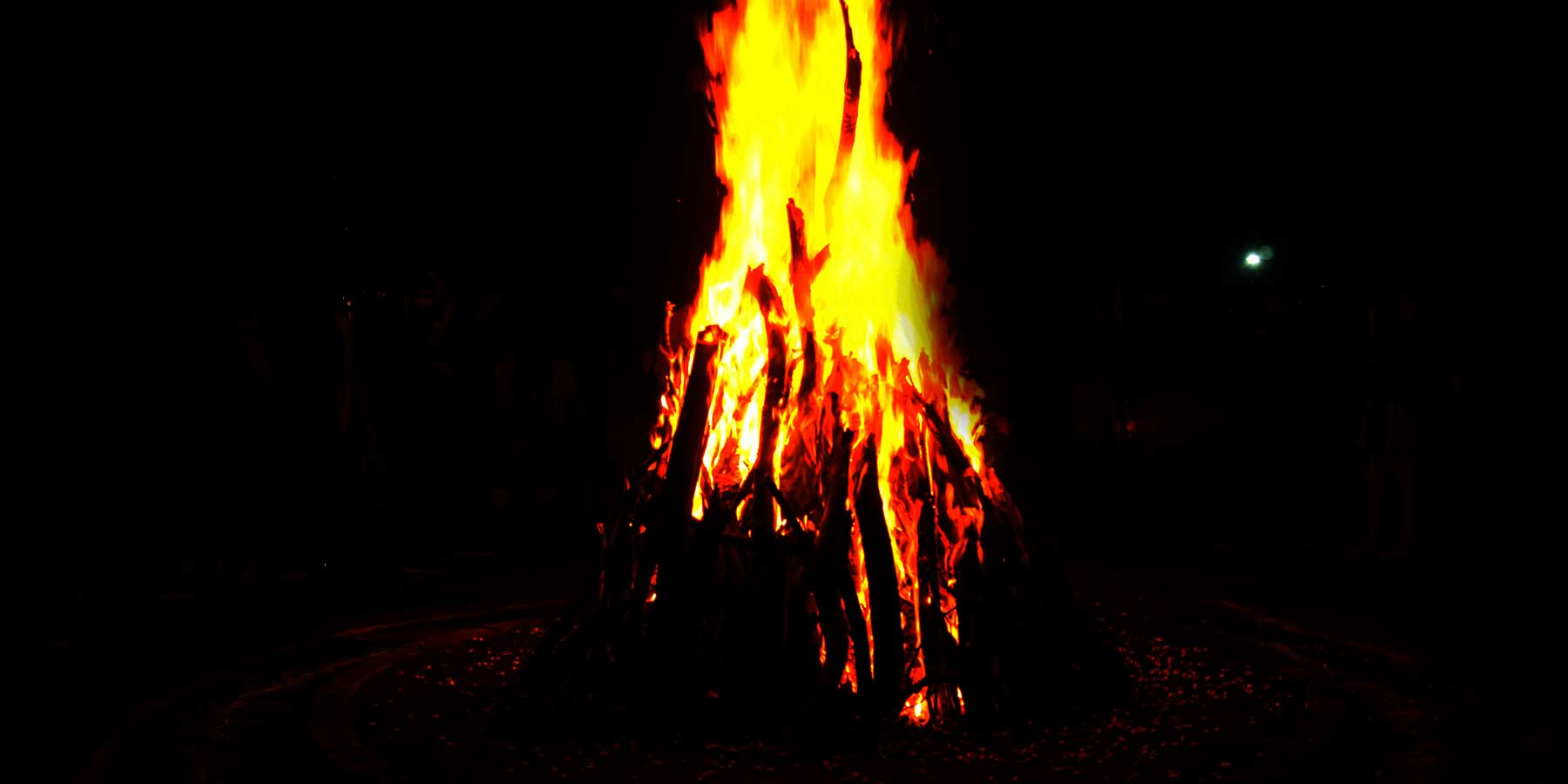
Table of Contents
- Introduction
- The Mythological Origin of Holika Dahan
- The Symbolism of Fire
- The Rituals and Celebrations
- Holika Dahan and the Message for Modern Times
- Cultural Variations Across India
- Conclusion
1. Introduction
As twilight falls and bonfires illuminate the night sky, Holika Dahan marks the beginning of one of India’s most vibrant festivals—Holi. But before the splashes of color and joyous laughter, there’s a sacred fire that carries an age-old message: the victory of righteousness over wickedness, of courage over fear, and of faith over deceit.
Holika Dahan is not merely a ritual; it’s a powerful narrative of how truth always finds a way to shine, even in the darkest of times.
2. The Mythological Origin of Holika Dahan
The story behind Holika Dahan comes from ancient Hindu mythology. It centers around the demon king Hiranyakashipu, who, intoxicated by his powers, demanded that everyone worship him. However, his own son, Prahlad, was a devout follower of Lord Vishnu and refused to bow down to his father’s arrogance.
Enraged, Hiranyakashipu tried to eliminate Prahlad multiple times. One such attempt involved his sister Holika, who had a magical cloak that protected her from fire. She tricked Prahlad into sitting on her lap in a blazing pyre, believing she would be saved while he perished.
But the divine had other plans. The cloak flew from Holika to Prahlad, shielding him instead. Holika burned to ashes, while Prahlad emerged unharmed, his unwavering faith rewarded.
3. The Symbolism of Fire
The fire of Holika Dahan is more than just flames—it’s a metaphor for purification. It symbolizes the burning away of negativity, ego, deceit, and injustice. It invites people to reflect on their inner demons and to seek renewal with the onset of spring.
As families gather around the bonfire, they toss old items, grains, and even coconut into the flames—each act symbolizing the discarding of the old and making way for the new.
4. The Rituals and Celebrations
Holika Dahan takes place on the eve of Holi, known as Chhoti Holi. The ritual begins with the gathering of wood days in advance, culminating in the construction of a pyre in public squares or courtyards.
The ceremony starts after sunset. People perform parikrama (circumambulation) around the fire, chant prayers, and offer food and flowers to invoke blessings. Songs, dances, and the sharing of festive sweets follow, turning the night into a joyous prelude to Holi.
5. Holika Dahan and the Message for Modern Times
In today’s world, Holika Dahan carries more relevance than ever. It urges us to stand firm in our beliefs, even when the world seems to turn against us. It reminds us that no power, no matter how great, can silence the voice of truth.
Whether it’s about overcoming personal struggles, resisting injustice, or holding on to faith in turbulent times, Holika Dahan is a call to inner strength and moral clarity.
6. Cultural Variations Across India
While the core essence of Holika Dahan remains the same, its celebration takes on unique forms across different regions:
- In Uttar Pradesh, effigies of Holika and Hiranyakashipu are often burned.
- Punjab celebrates it as Hola Mohalla, with martial arts and spirited processions.
- In South India, the focus is more on Kama Dahanam, where the god of desire is burned, symbolizing detachment and self-control.
This diversity enriches the festival, weaving together the many threads of India’s cultural tapestry.
7. Conclusion
Holika Dahan is more than just a myth, more than just a ritual. It is a timeless tale of resilience, love, and divine justice. It asks us to reflect, to cleanse, and to emerge stronger with the spirit of spring.
So as the fire crackles and the night sky glows, let us remember: every Holika has an end, and every Prahlad finds protection. Goodness will always find its way.

